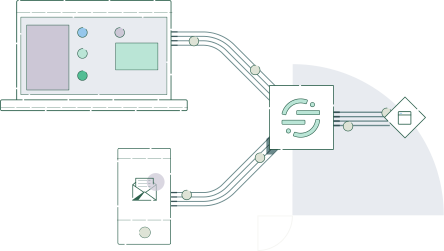While a CDP can bring lots of functionality on its own, it’s critical to ensure other systems integrate with your CDP. Other systems can maximize a CDP’s functionality of real-time collection, identity resolution, and activation to create incredible customer experiences.
For example, let’s say a customer tries and fails to pay a bill online. Within five minutes of that event he calls into the Interactive Voice Response (IVR). The system should receive that data and be aware of that online failure and adjust accordingly. Instead of, “How can I help you today?,” the greeting is, “Hi Isiah. I see you tried to pay your bill online. May I help you complete that task?”
Isaiah then receives a follow-up message encouraging him to set up automatic payments. Isiah is happy because he no longer has to take the time to explain why he is calling. The company is happy as they can now deflect volume and provide a better experience through a self-service channel. Each of these data points allows the company to build a better understanding of its customer.
Customers want a personalized experience to match their context. Sending the wrong message at the wrong time, too frequently or not enough, can diminish trust in your brand. In an industry like financial services, trust is paramount.
Launching a machine learning practice
The right data and systems coupled with a strong machine learning practice can deliver the right messages to your customers in the format and system they expect. Accenture’s research suggests that machine learning drives competitive advantage and will add US$1.153 billion in value to the financial services industry by 2035.
Clean and consistent data is critical for powering accurate machine learning models. Using a CDP as the key source for models, companies can define relevant features that drive the most accurate predictions, like how, when, and where a customer wants to interact with your business.
For example, a new financial services entrant was able to increase onboarding activation from enrollment to direct deposit by 140% by leveraging Segment’s capabilities to ingest and activate data. Segment collected and sent hundreds of different user actions along the customer journey to its machine learning application. The application trained a lookalike model to forecast user intent and build cohorts based on propensity to engage in key milestones along the customer journey. Those cohorts were then sent back to Segment to activate in its web experimentation and email platforms. So now, when a user reaches a qualifying step, its marketing automation platform can send them an SMS, email, or in-app notification depending on propensity score to activate in the coming week.
With rich customer data powering machine learning models, this company can now personalize the message, channel, and even identify the best time to communicate for each stage in the funnel.
While clean and consistent data is key for machine learning, implementing a successful machine learning initiative requires more. Before kicking off your ML project, take time to:
-
Understand who your user is, what they need, and what delights them.
-
Identify ownership across key internal stakeholders.
-
Define the metrics and business goals.
-
Determine which areas of the user journey you will experiment with first.
-
Ensure agility from insight to action. How often will your team refine, stop, or build new experiences based on insights uncovered?
By first understanding your customer and then defining the metrics and experiments you want to run, you are ensuring you are optimizing the experience for your target persona while impacting the most important metrics for your business.
Looking to the future: Building trust to accelerate growth
Pre-pandemic, having the ability to deliver consistent experiences was differentiating enough. Now, with consumer behavior changing and financial pressure growing, consistency is considered the bare minimum.
Banking and financial services have the opportunity to drive a new narrative by building customer empathy into everything it does, or it risks customers moving their business to those that have adapted to their needs.
Rolling out a CDP such as Segment provides businesses with the flexibility and capability to support real-time personalized experiences that can build the trust that drives purchase intent. Doing so requires choosing the right CDP, applying the right governance, and the willingness to adapt or transform operational models to capitalize on the data and insights surfaced.
Are you starting a digital transformation project? To get started unifying your data, request a demo to speak to a Segment expert.



